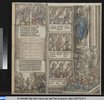
"Henry II (German: Heinrich II; Italian: Enrico II) (6 May 973 – 13 July 1024), also known as Saint Henry the Exuberant, Obl. S. B.,[a] was Holy Roman Emperor ("Romanorum Imperator") from 1014 until his death in 1024 and the last member of the Ottonian dynasty of emperors as he had no children. The Duke of Bavaria from 995, Henry became King of Germany ("Rex Romanorum") following the sudden death of his second cousin, Emperor Otto III in 1002, was made King of Italy ("Rex Italiae") in 1004, and crowned emperor by the pope in 1014.
The son of Henry II, Duke of Bavaria, and his wife Gisela of Burgundy, Emperor Henry II was a great-grandson of German king Henry the Fowler and a member of the Bavarian branch of the Ottonian dynasty. Since his father had rebelled against two previous emperors, the younger Henry spent long periods of time in exile, where he turned to Christianity at an early age, first finding refuge with the Bishop of Freising and later during his education at the cathedral school in Hildesheim. He succeeded his father as Duke of Bavaria in 995 as "Henry IV". As duke, he attempted to join his second-cousin, Emperor Otto III, in suppressing a revolt against imperial rule in Italy in 1002. Before Henry II could arrive, however, Otto III died of fever, leaving no heir. After defeating several contenders to the throne, Henry II was crowned King of Germany on July 9, 1002 as the first in a line of kings to adopt the title Rex Romanorum, an allusion to his perceived prerogative to the future appointment of Imperator Romanorum. On 15 May 1004 he was anointed King of Italy ("Rex Italiae") and in 1004 Henry II joined Jaromír, Duke of Bohemia in his struggle against the Poles, thus effectively incorporating the Duchy of Bohemia into the Holy Roman Empire." - (en.wikipedia.org 31.01.2020)
 )
)






